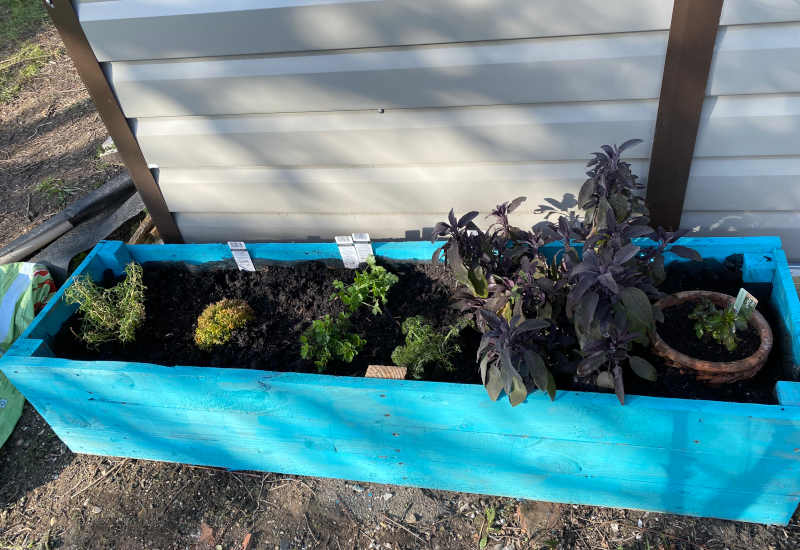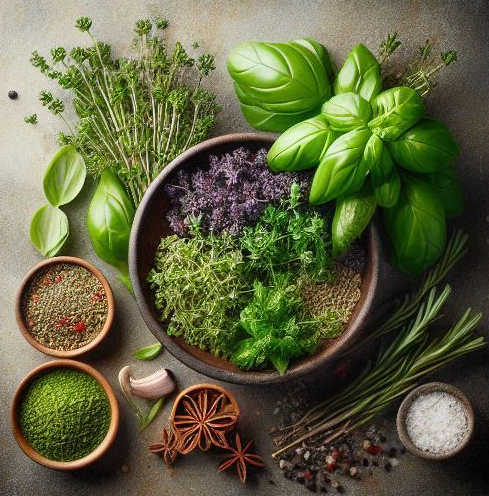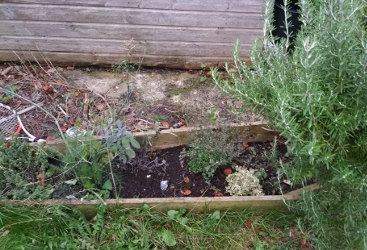March - preparing seeds for growing
Just a quick update, we’ve been busy in the NutriCherry household readying plants to go outdoors once things warm up a little more. Along with my home made herb bed we’ll be planting a mix of seeds including tomatoes, cucumbers, courgettes, beetroot, carrots, onions and potatoes into our raised beds. There’s a mix of “real seeds”, F1 hybrids and seeds recovered from last year in there.
Over the summer, I’m going to build some covers for the beds somewhat like mini poly-tunnels so that we can extend the growing season slightly. I’ve already got enough wood that I’ve recovered, and some blue 25mm outdoor pipe left over from other jobs that I can use to build the frames. I’m going to use some high grade polythene as the cover.
Making a herb garden in a wooden raised bed
After many years of service, the original NutriCherry herb bed started to fall apart and needed an overhaul. I’d recently bought and built a new shed, and it seemed like a good idea to build a new raised bed for herb growing next to it. Along with being quite a sunny position there, the shed base was built up on uneven ground so also provided a bit of extra ballast.
I like growing herbs for use in cooking, you can chop them up whatever way suits the recipe you’re working with, and you have the pleasure of knowing that you grew them yourself. For many but not all herbs, they will have a more delicate taste than their dried alternatives, but you’ll soon get used to working out how much of each is needed. I generally find somewhere between around 50-100% more is needed. I’ve got a guide to making italian herb mixes that goes into more detail.
Make your own italian herb mix from scratch
If you’ve got a batch of fresh herbs, or prefer to make up italian seasoning from scratch, then this is my go to for the mix ratios. In fact in all my recipes when I suggest “Italian herb mix” you can either use shop bought or this.
What we call italian seasoning is a general purpose approximation of the herbs used from a mix of areas around Italy. Mine is based on three core ingredients Oregano, Basil and Parsley.
A few notes for those getting started breadmaking
Even though bread often has just a handful of ingredients, it is actually quite difficult to get good results. As with most people starting out bread making, my first loaves were heavy and borderline inedible, even when following instructions quite closely. That led me to to read a few books on baking, then I understood a few things:
Introducing the nutricherry herb garden
Although at the moment my herb garden is a little overgrown and may look somewhat abandoned, it’s actually been quite productive this year. Our rosemary bush has provided more that we could possibly use, the oregano has been doing well and thyme likewise, has been providig more than enough for our cooking.
Growing herbs is generally quite easy as they are normally wild plants, this means they need far less looking after than other edible plants. I find just digging over and treating a bed with some compost is enough. Personally, I usually buy herbs as small plugs and plant them, but if you prefer then go direct from seed.
Tools needed for bread making
Bread making is one of the few hobbies that has a very low barrier to entry, just a regular household oven, and some kind of baking tray are needed. Most households will already have enough to get started.
However, although you could make bread without most of the tools below these are the items that I use often.





